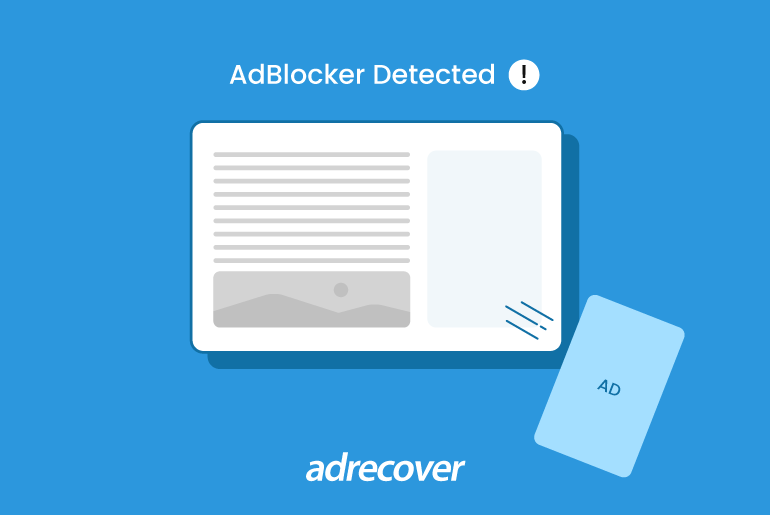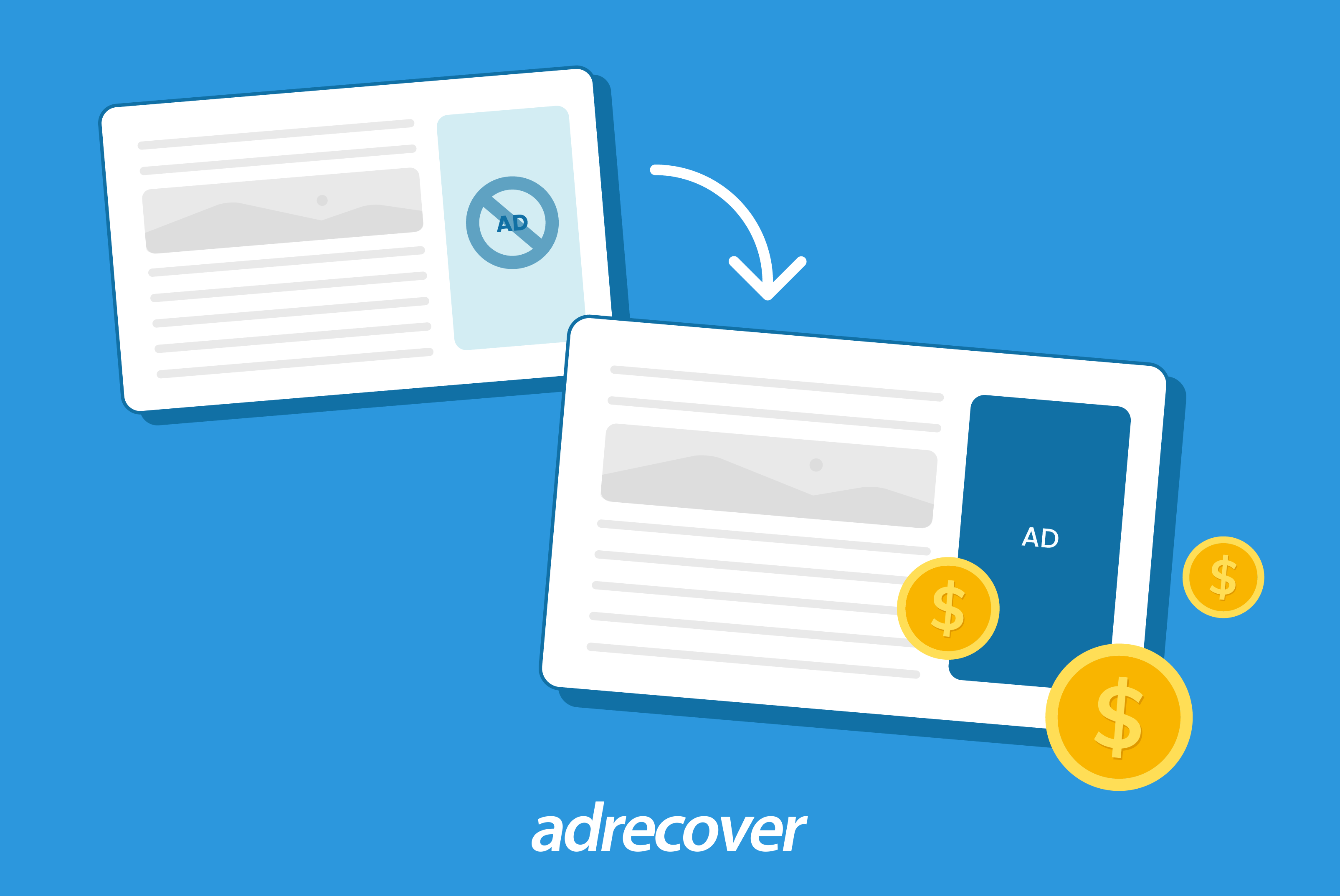Recent Blogs
Presuming that you are doing some important work or you are streaming your favorite series online and ads start popping up in a very short span of time, sounds irritating right? Well, it definitely is. No one likes interruptions when you are doing something meaningful or in the middle of the fun, and that’s when AdBlock comes into the picture. But most of you still ask “What is Adblock.
Let’s dig in further to understand about AdBlock and how they exactly work to make your life easy and less maddening.
What Is Adblock?
Adblockers as its name suggests is an extension or a plugin that any user can use to remove or alter the online content that is advertised by third parties. Basically, it is a type of application or browser extension designed to prevent advertisements from displaying on web pages or within other digital content.
What Adblockers Exactly Do?
If we explain in simple language, ad blockers is a software that prevents the unnecessary and irrelevant advertisements on a webpage. These ad blockers disallow content that depends on application to application. It can be all advertisements that are meant to be on a web page or content that can invade a user’s privacy. They are generally the ones which come with tracking codes and give information about the user’s activities on a webpage. For example, how much time a user spends online or its contact, name or any other thing available on a website.
Adblocker works on a technology that is based on filter lists, these lists pre-determines what to block and show to the user and allow only useful or worthy content to appear on the page visited. These filter lists are nothing but a list of URLs which either belong to “allowlist” or a “blocklist”.
In today’s world when the entire digital world is working on paid advertising, it is very common that users are getting more inclined towards ad blockers and eliminators.
Advantages and Disadvantages of Ad Blockers
While most of the users are taking advantage of ad blockers for seamless online experience, there are still few who are more concerned about its after-effects. While there are multiple benefits of ad blockers, there are some cons that you must consider before using the software.
Advantages of Adblock
- Blocking ads is done by tracking codes and running scripts to prevent ads which makes your webpage loading quick and efficient.
- Ad Blocker also helps save up and improve battery life for a longer period of time of any device.
- It also protects users from unauthorized links and maintains privacy.
- And the most important benefit of having adblocker is that the user is free from all interruptions and annoyance of ads.
Disadvantages of Ad Blockers
- The most significant disadvantage is the loss of ad revenue. Adblockers prevent ads from being displayed to users, leading to a decrease in ad impressions and click-through rates.
- Smaller publishers, who heavily rely on ad revenue and may not have the resources to explore alternative monetization strategies, can face significant challenges when dealing with ad blockers.
- Adblockers can strain the relationship between advertisers and publishers. Advertisers may be hesitant to invest in advertising if a significant portion of their target audience uses ad blockers, affecting publishers’ ability to fulfill ad delivery commitments.
- In response to ad blockers, some publishers may shift their focus to social media platforms or other native content distribution channels that are less affected by ad blockers. However, this can lead to increased dependency on third-party platforms, which can have its own risks and limitations.
The Ultimate Solution For Marketers For Ad Blockers
The Ad Blockers have undoubtedly affected the marketers overall performances and effects on the desktop, but they still have an edge towards cell phones and tablets. There is no doubt to mention that a major part of the target audience of marketers lies within cell phone users. All thanks to more online searches on mobiles by users than ever before as compared to desktop.
Marketers can use this for their profit until there is an emergence of advanced ad blockers in the market. So, it is important for marketers to understand and accept that desktop, tablets, and mobile devices, everything is open to ad blockers.
Measures for marketers to analyze and decide where to spend their marketing funds and get better results:
-
Examine the performance of your ads
If what you do in advertising is a brand mix, you must analyze how effectively it is working for your business. Rather than spending money and getting nothing out of it, you must see whether your target audience is using ad blockers or not. If yes, what is the percentage of users having these extensions and only target those which are away from this ad blocking technology.
It is important to know that the audience using these software varies from industry to industry, like in the gaming industry, the audience is smart enough to know about such applications. While, shopping ones are less likely to have such extensions. Marketers can use such information for their benefit and to make their ads more persuasive.
-
Pay Attention To Ad Visibility
When it comes to ads, the most important question stands on visibility. So it is important to know whether your ads are seen or not. And if your ads are being hidden or not visible, you do not have to worry about it. All you need is ad promoters.
AdRecover provided a solution for website publishers to recover lost ad revenue caused by ad blockers. The service worked by displaying polite and user-friendly messages to visitors who were using ad blockers, encouraging them to disable the ad blocker or whitelist the website to support the publisher’s content.
AdRecover aimed to strike a balance between respecting users’ preferences for an ad-free experience and enabling publishers to monetize their content through advertising. Some of the best ad recovery softwares are AdRecover, Blockthrough and Unblockia.
What Are Adblock Detection and Mitigation Techniques?
Adblock detection and mitigation techniques are strategies employed by website owners and publishers to identify if a user is using an adblocker and, in some cases, to attempt to work around ad blockers to serve ads or display content. These techniques are controversial as they can be seen as intrusive or may negatively impact user experience.
-
Anti-Adblock Scripts
Website owners can use scripts to detect if a user has an ad blocker enabled. These scripts can check for the presence of known ad blocker extensions or look for specific elements that are usually blocked by ad blockers.
-
Subscription and Paywalls
Some websites choose to implement subscription models or paywalls to provide an ad-free experience for users who are willing to pay for it. This way, they can generate revenue from users directly instead of relying on ad revenue.
-
Acceptable Ads
The Acceptable Ads initiative, managed by Adblock Plus, allows publishers to comply with specific criteria to display non-intrusive ads that are less likely to be blocked by ad blockers.
-
Ad Blocker Walls
A more drastic measure involves blocking access to content entirely for users with ad blockers. In this case, visitors are prompted to disable their ad blockers to access the content.
Conclusion
Ad Blockers have forced publishers to adapt and innovate within the AdTech ecosystem. While they have introduced challenges, they have also led to the exploration of new revenue models and a greater focus on user experience, ultimately shaping the future of digital advertising. The most important thing for publishers is to maintain a good user experience and simultaneously maintain a good revenue stream.
While the ad blockers will remain a very important factor in online marketing, there are many things that one can do to leverage the ad blockers for generating greater revenue and profits. So, ad blockers will continue to influence the strategies and practices of publishers, advertisers, and technology providers. The key is to find the right balance in delivering a non-intrusive and efficient advertising experience for the users, while keeping privacy and user preferences at the forefront.




Let's Connect